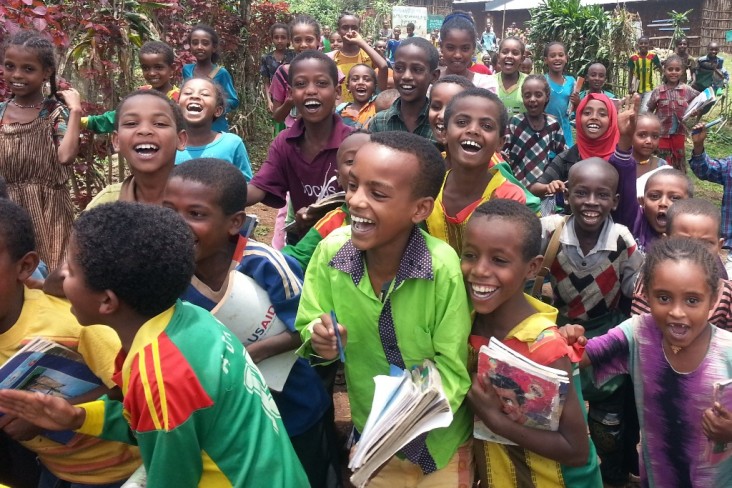
For Immediate Release
Addis Ababa, Ethiopia -- The U.S. Government, through the U.S. Agency for International Development (USAID), marked the culmination of its Transforming Education for Adults and Children in the Hinterlands project. The closing event recognized the many accomplishments of the project over the last ten years, including the construction of more than 850 alternative basic education centers in the most remote communities in Ethiopia.
With a fairly high enrollment rate for primary schools in Ethiopia, many school-age children in more remote rural areas faced access issues and did not attend school regularly because schools were too far away and children were needed to assist with household tasks, such as retrieving water. Furthermore, about 57 percent of adults lacked basic literacy skills.

To increase access to education for the hardest-to-reach populations in Ethiopia’s pastoralist and nomadic, resettlement and food-insecure areas, the activity modeled a unique approach to providing education by using low-cost construction materials and drawing on community labor and contributions to construct alternative basic education centers. These centers use specially designed education programs to attract students and their families and better respond to the specific needs of their communities.
By promoting the use of these education centers and improving the ability of woreda (district) education offices to manage non-formal educational programs, USAID pioneered a model that the Government of Ethiopia has since adopted as a successful way to increase education opportunities for out-of-school students. Combined, these centers have resulted in more than 1.5 million students enrolling in school and all education centers have been integrated into Ethiopia’s formal education system.
As we acknowledge the project accomplishments, it is also opportune to commemorate this year’s International Literacy Day under the theme, “Literacy and Sustainable Societies.” Through the project, USAID and its partners successfully created 128 new supplementary reading materials for grades 1 and 2. These were developed in close technical collaboration with the Ministry of Education and the Amhara, Oromia, Somali and Tigray regional state education bureaus. The reading materials represent the creativity and talent of Ethiopia’s authors and illustrators. They are aligned with the new mother tongue textbooks and are marked with an open-source, public license—as opposed to a restrictive copyright—to ensure maximum and continued reproduction and dissemination. More than 330,000 copies will be distributed to underserved communities by the end of October, and local partners have already committed to distributing thousands more nationwide.
“We’re committed to continue working with the Government of Ethiopia to ensure that more Ethiopian children will have the chances to ‘go places’ in their lives,” said USAID Ethiopia Acting Mission Director Ramona El Hamzaoui.
TEACH was implemented by Pact in partnership with nine outstanding local implementing partners.
See also
Press Release TEACH 9-30-15 [PDF, 88kb]
Press Release TEACH 9-30-15 Amharic [PDF, 276kb]
USAID Remarks TEACH 9-30-15 [PDF, 198kb]







Comment
Make a general inquiry or suggest an improvement.